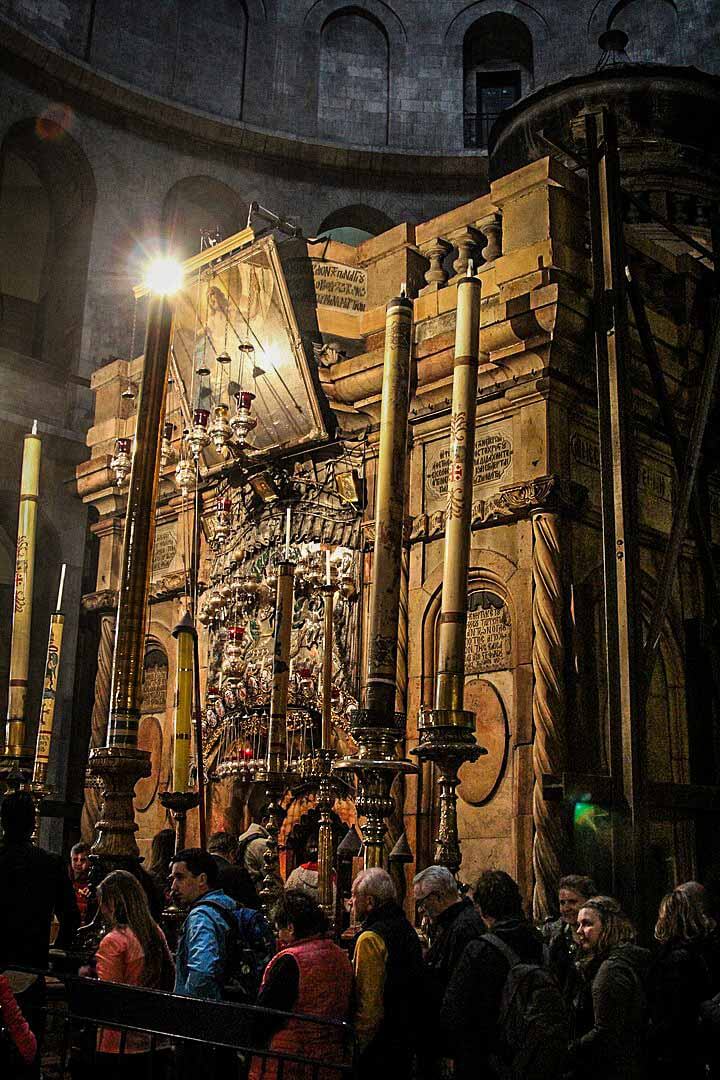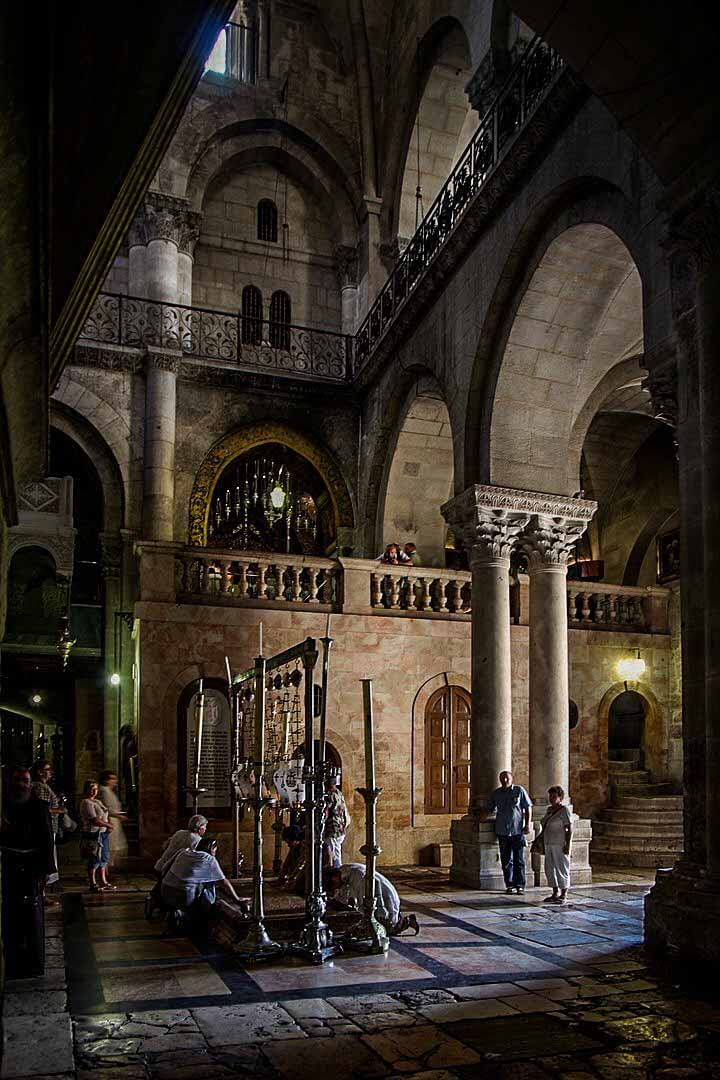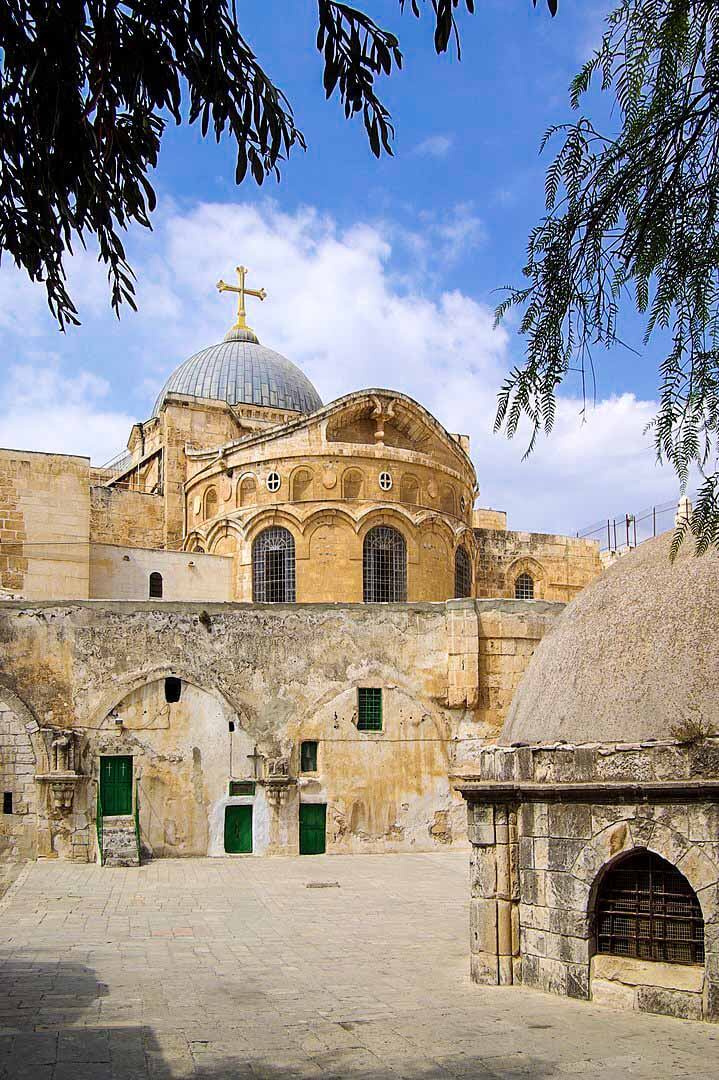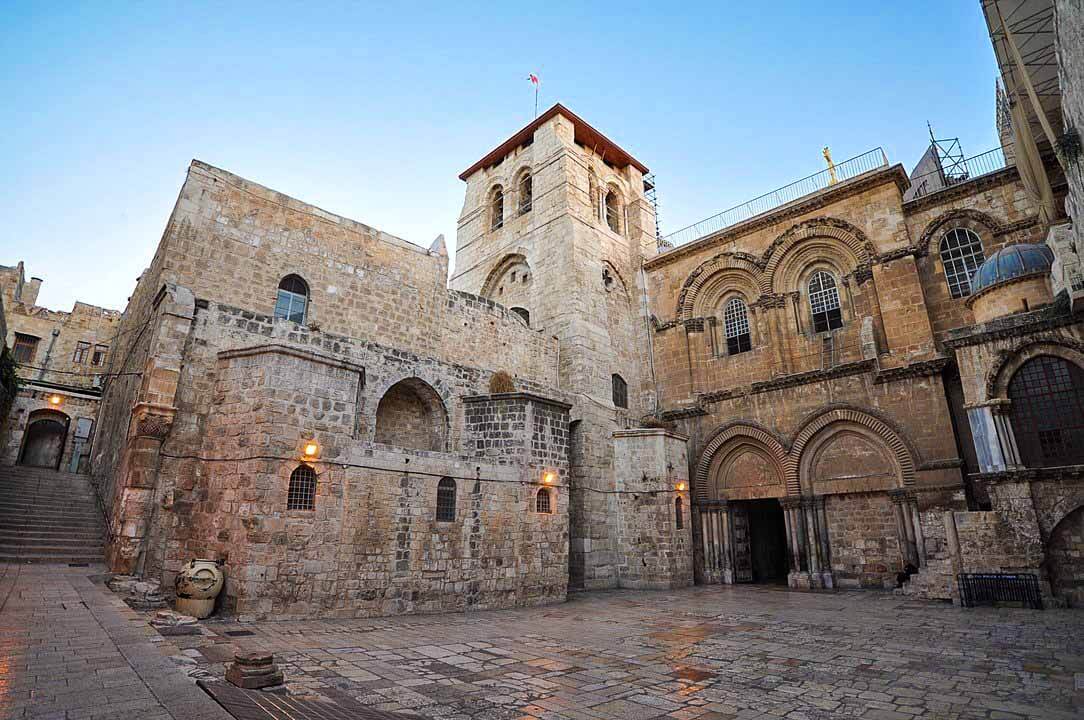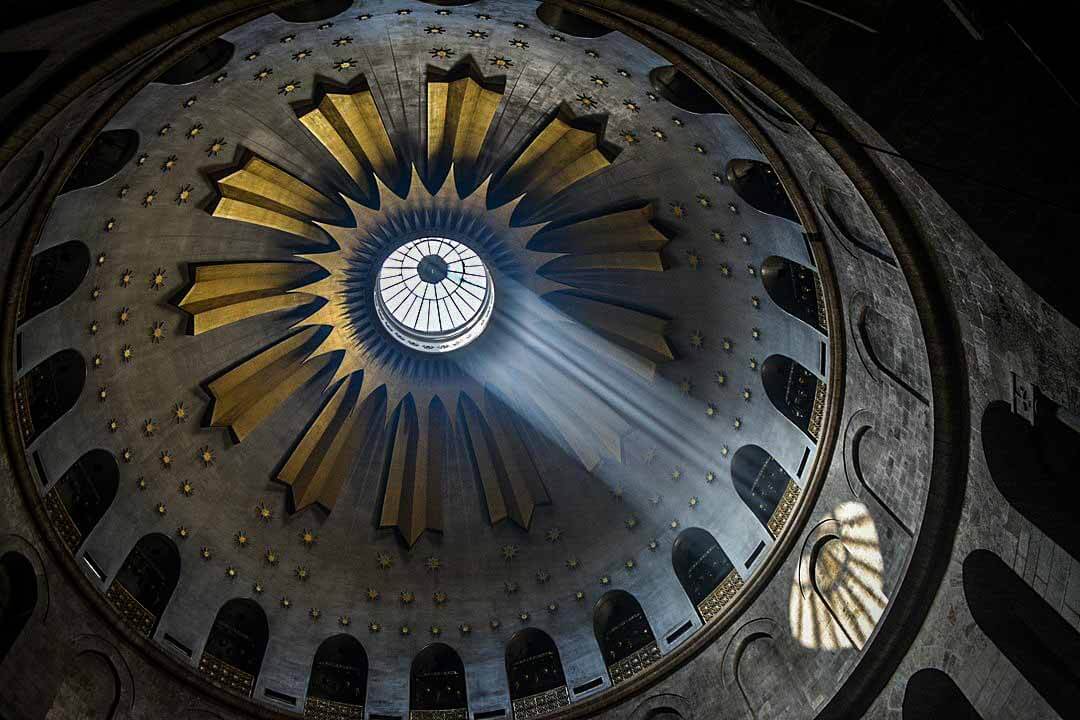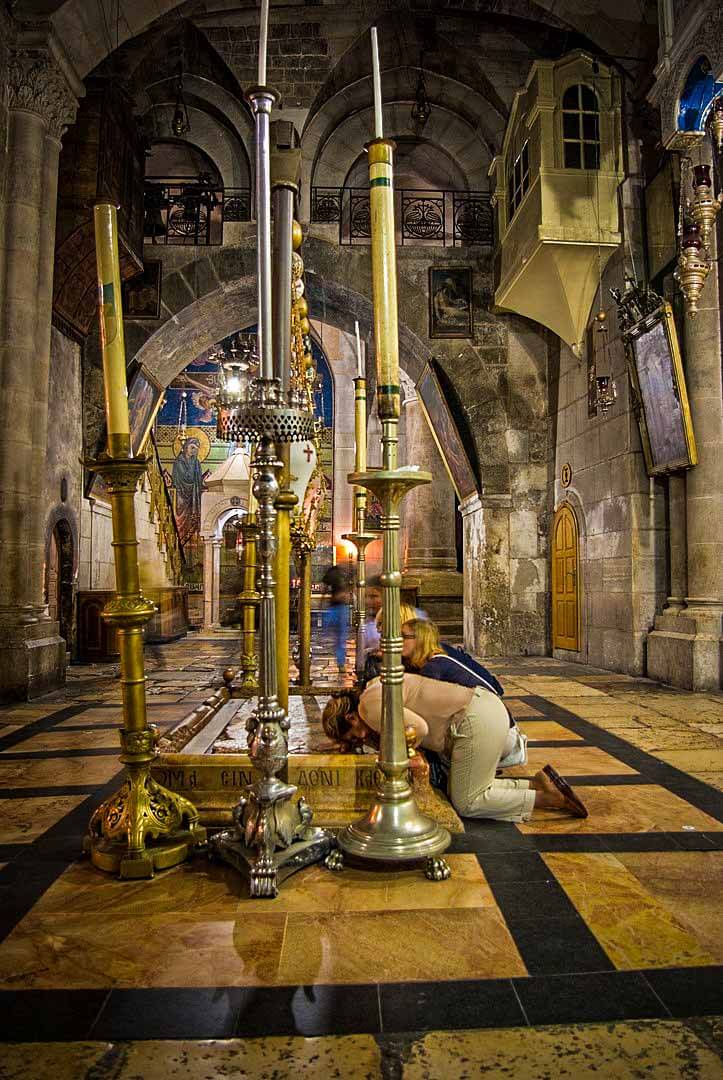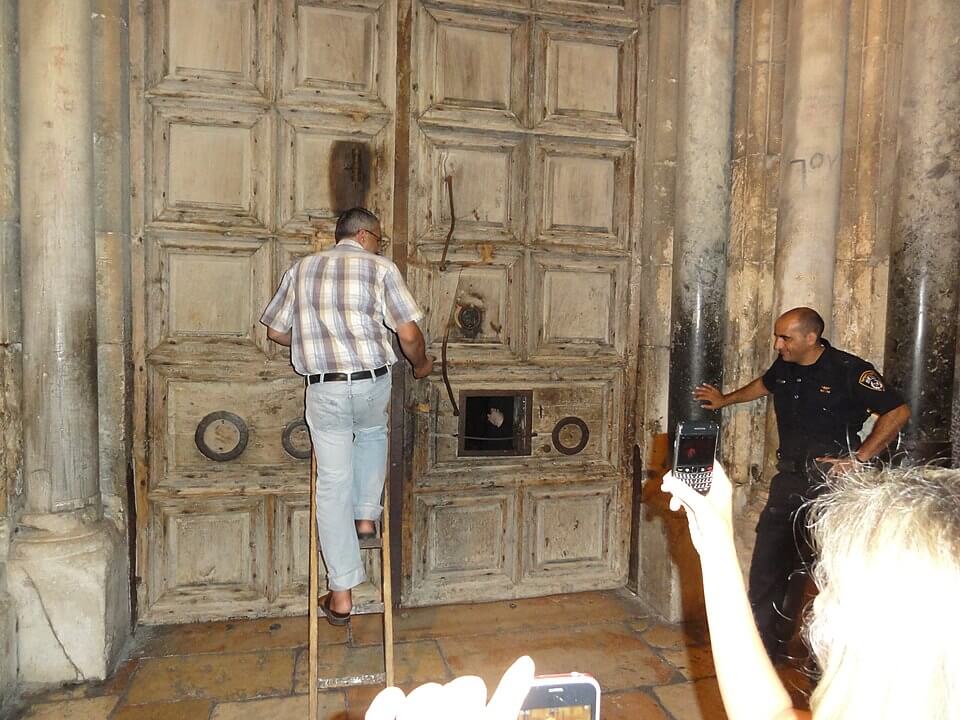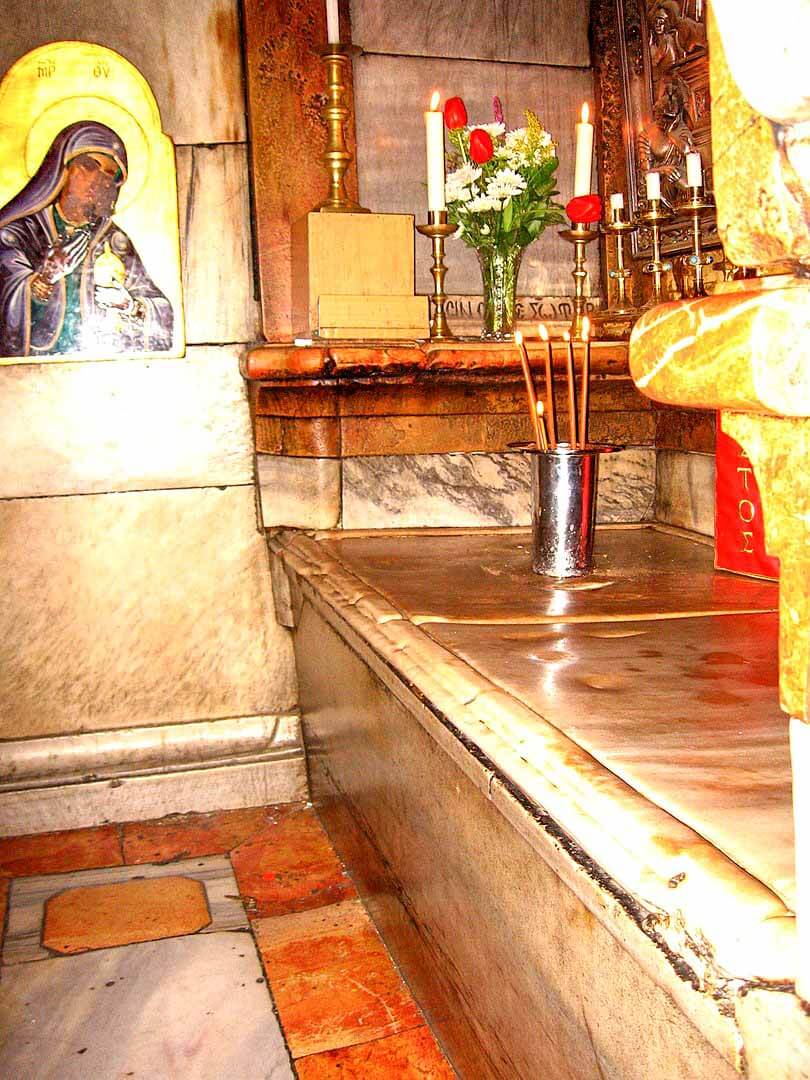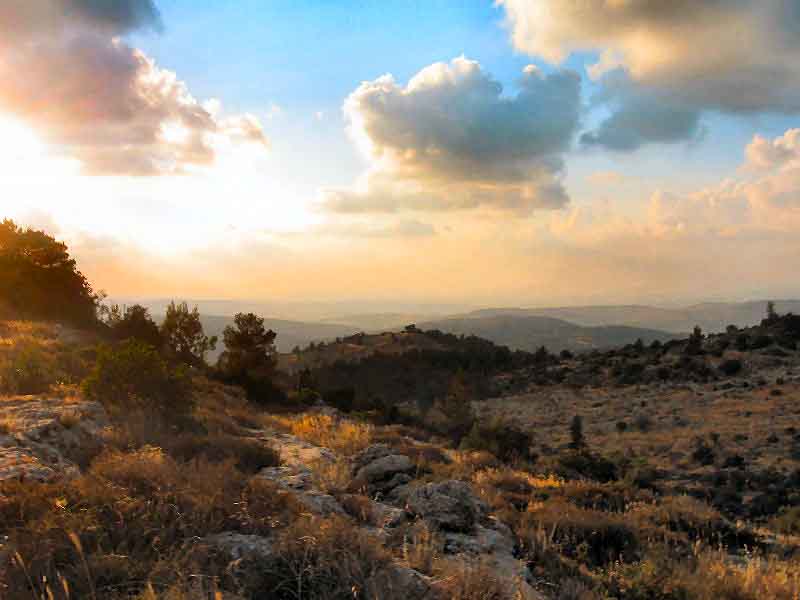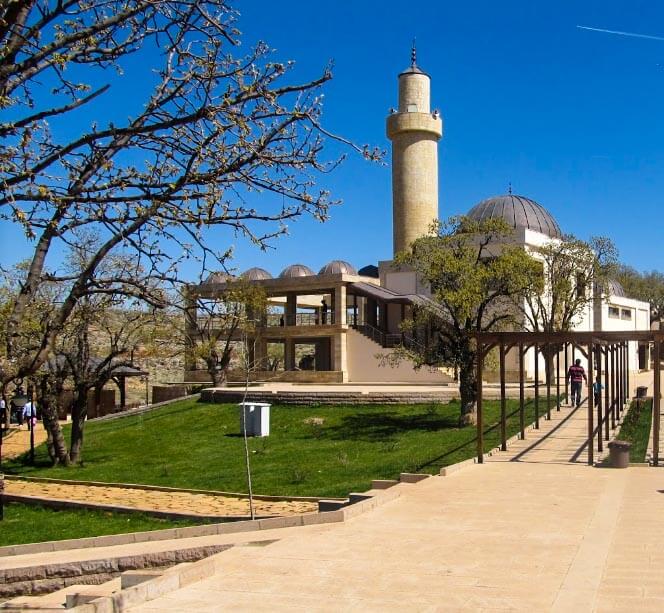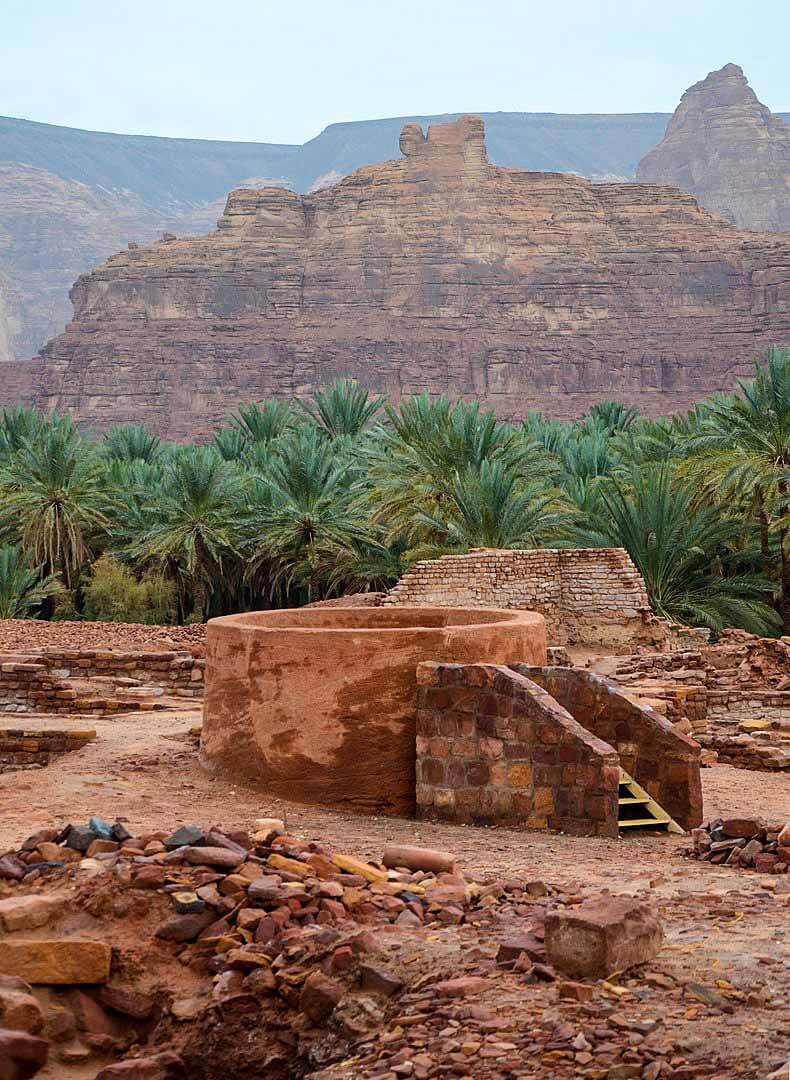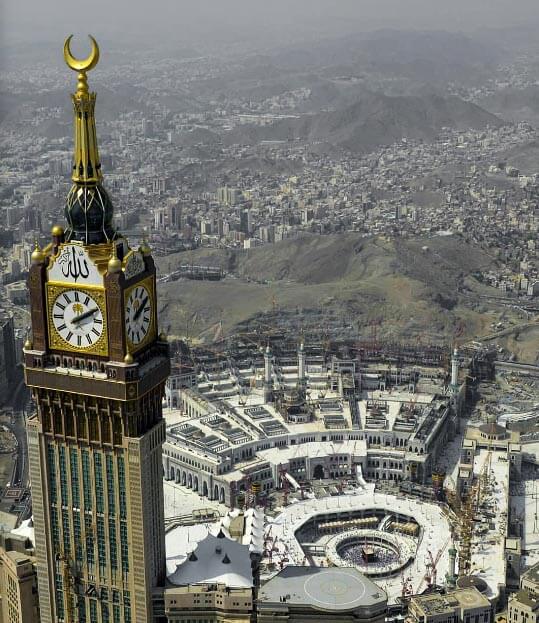Old City, Jerusalem – Palestine
Coordinates: 31.778333, 35.229722
The Church of the Holy Sepulchre is a church in the Christian Quarter of the Old City of Jerusalem.
The church contains, according to christian traditions, the two holiest sites in Christianity: the site where the duplicate of Hz. Isa عليه اسلام was crucified, at a place known as Calvary or Golgotha, and the duplicate’s empty tomb, where he was buried.
The tomb is enclosed by a 19th-century shrine called the Aedicula.
The Status Quo, an understanding between religious communities dating to 1757, applies to the site.
Within the church proper are the last four (or, by some definitions, five) stations of the Via Dolorosa.
The church has been a major Christian pilgrimage destination since its creation in the fourth century.
Shared property
Today, the wider complex around the Church of the Holy Sepulchre also serves as the headquarters of the Greek Orthodox Patriarch of Jerusalem, while control of the church itself is shared among several Christian denominations and secular entities in complicated arrangements essentially unchanged for over 160 years, and some for much longer.
The main denominations sharing property over parts of the church are the Greek Orthodox, Roman Catholic and Armenian Apostolic, and to a lesser degree the Coptic Orthodox, Syriac Orthodox and Ethiopian Orthodox.
Keys of the church belonging to Muslims
The Nussaiba Clan is the oldest Muslim dynasty in Jerusalem. The Nussaiba family has a long history and tight bonds with Jerusalem, since the days their first forefathers arrived into Jerusalem in the 7th century.
According to tradition, the Nusseibeh family took its name from a female companion or Sahabiyah of the Islamic prophet Muhammad ﷺ named Bibi Nusaybah bint Ka’ab رضي الله عنها.
She was a member of the Ansar who transferred their political power over Medina sharif to Hz. Prophet Muhammad ﷺ.
Nussaiba fought along with Hz. Prophet Muhammad ﷺ in battle and was an early example of women taking leadership roles in Islam.
Since the arrival of Islam in Jerusalem in the seventh century, the Sunni Muslim family has held the keys of the Church of the Holy Sepulchre alongside the Joudeh Al-Goudia family (who were added to the original arrangement in the time of Hz. Salahuddin رحمة الله عليه, the Muslim conqueror who seized the holy city from the Crusaders in 1187).
This arrangement emerged during the days of the second caliph Hz. Umar Ibn al-Khattab رضي الله عنه, who hoped to avoid clashes among rival Christian sects for control over the church.
Although symbolic, the arrangement has provided the stability the Christians of the city needed, and is a symbol of tolerance and inter-religious harmony, and gave the Nussaiba family a visible role in Christian activities in Jerusalem, which include pilgrimages and visits by Western Christians.
Note: Some of the information in this article comes from Christians sources.
Before reading the following article it is highly recommended to read "Views of Islamic Scholars on ascension of Hz. Isa عليه اسلام




